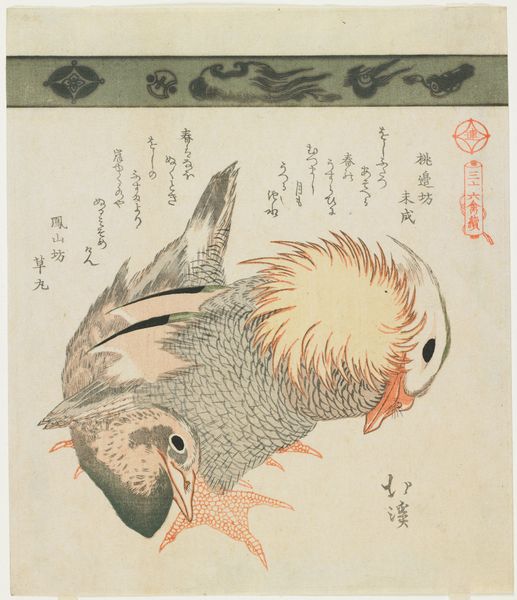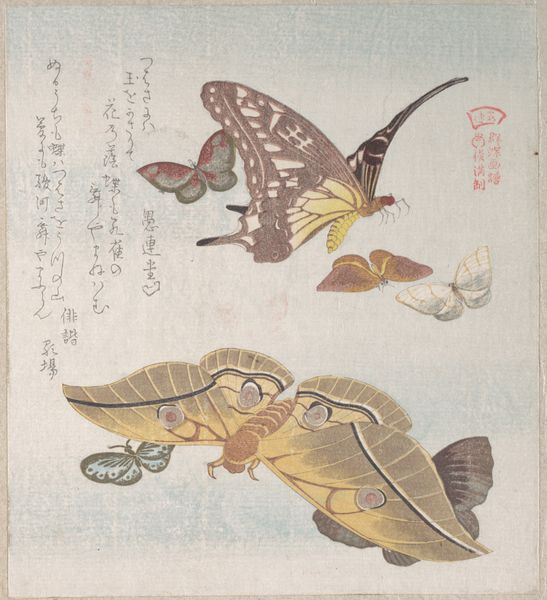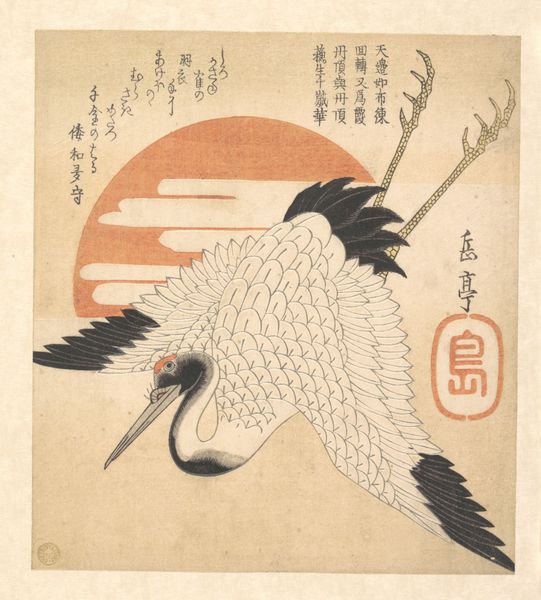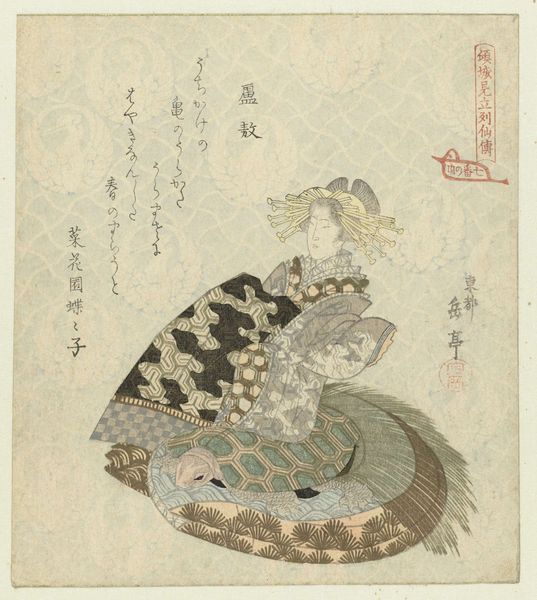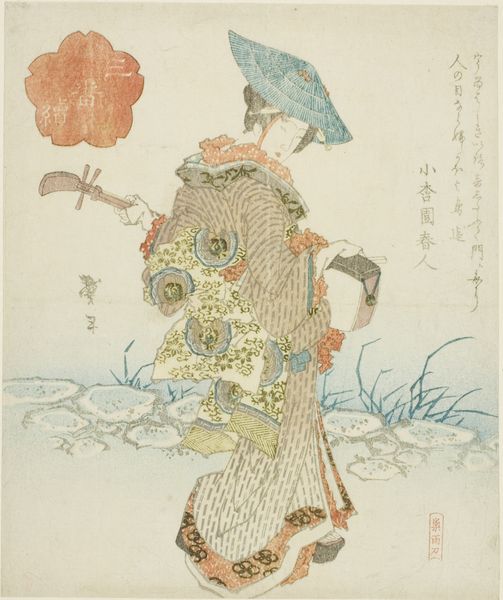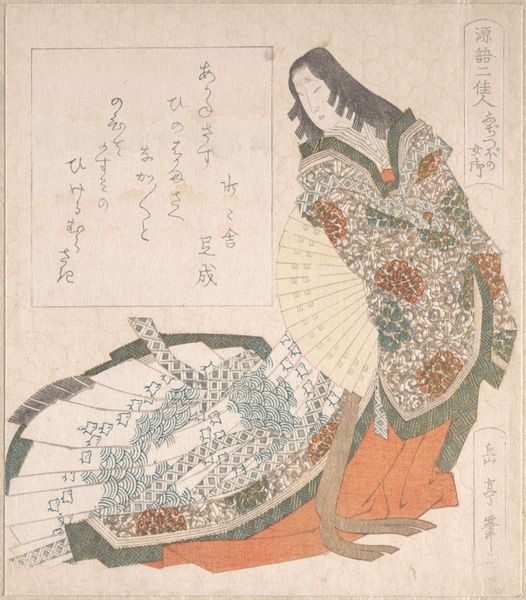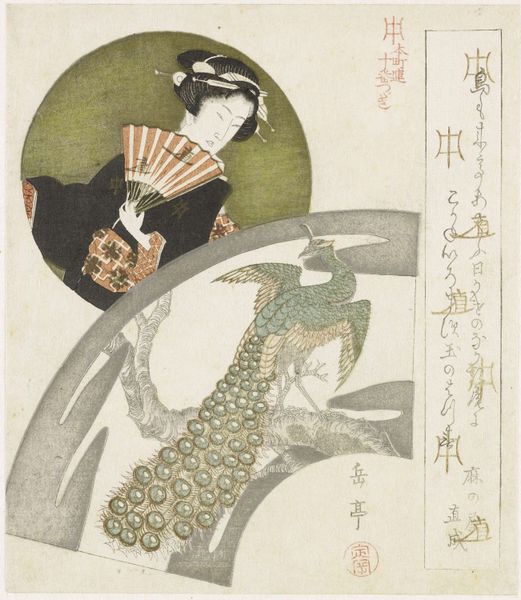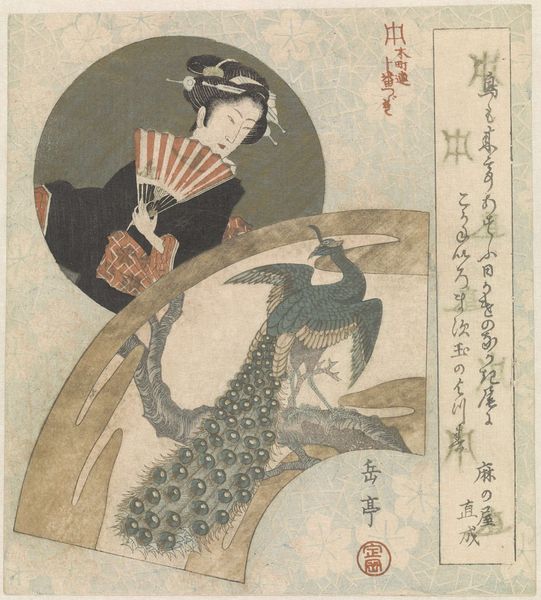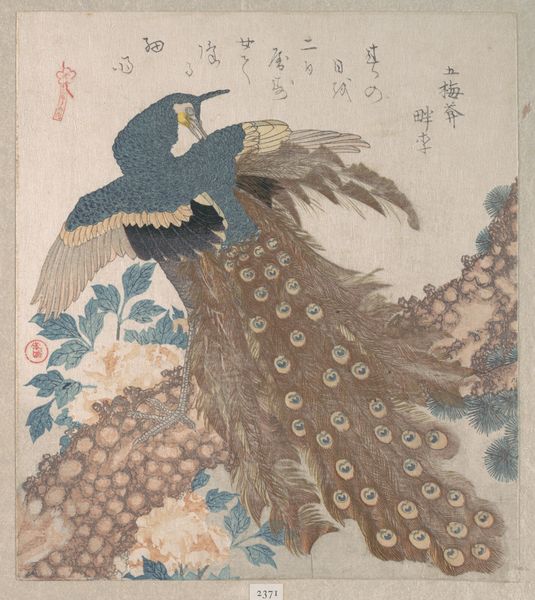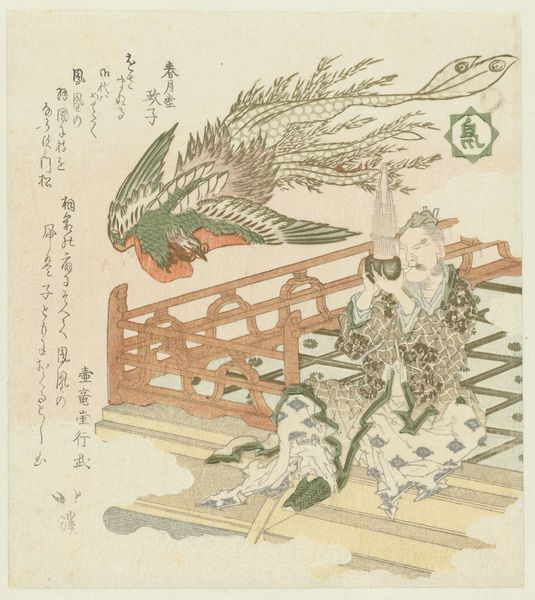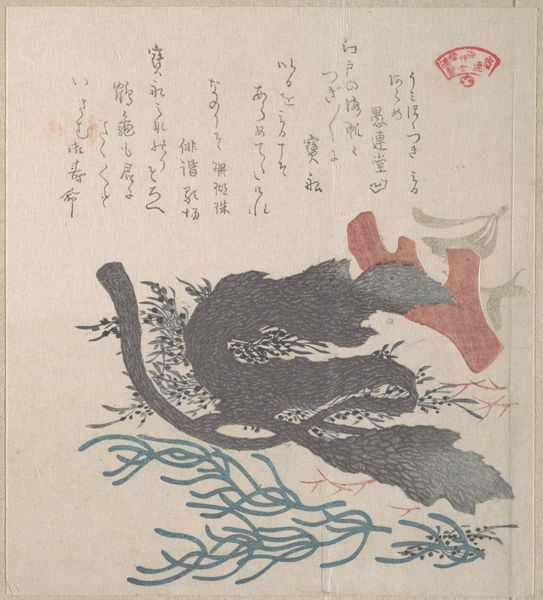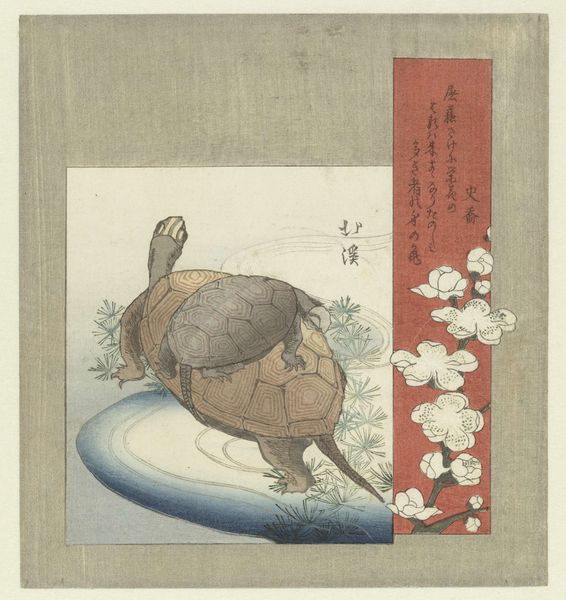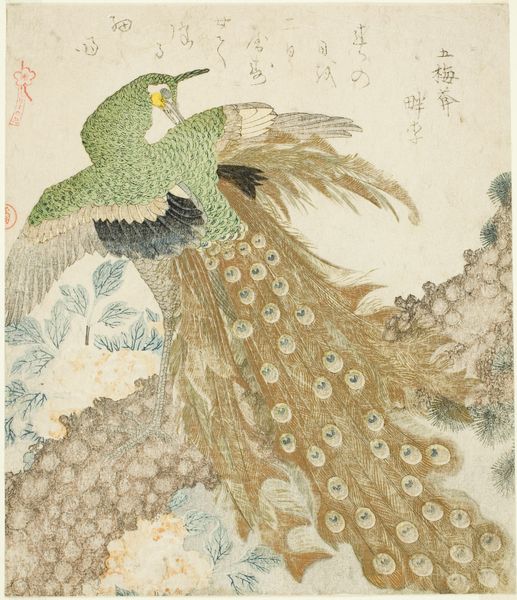
print, woodblock-print
#
water colours
#
muted colour palette
# print
#
asian-art
#
landscape
#
ukiyo-e
#
figuration
#
woodblock-print
#
japanese
Dimensions: height 210 mm, width 181 mm
Copyright: Rijks Museum: Open Domain
Editor: This is "Flying Plum" by Totoya Hokkei, a Japanese woodblock print from 1823. The stark, almost humorous contrast between the massive carp and the delicate plum blossoms is really striking to me. How do you interpret this work? Curator: The pairing immediately evokes a dialogue, doesn’t it? The carp in Japanese culture is deeply intertwined with notions of perseverance and strength, think of the koi swimming upstream. Yet, here it is, comically large, almost leaping out of the picture. Then we have the plum blossoms, *ume*, symbols of resilience too, as they bloom even in the snow. Does this visual pairing suggest an interconnectedness between strength and beauty, or perhaps question our assumptions about where power resides? Editor: That's fascinating! I hadn't considered the *ume* in that light. The carp does seem almost satirical now. Curator: And look at the textual elements; the calligraphy isn’t merely descriptive, but integral to the image’s overall meaning, embedded in a long cultural tradition. Could this "flying plum" also hint at the fleeting nature of beauty and strength? Does the image, caught between symbol and satire, point to deeper ambiguities within Japanese cultural values? Editor: So, it's not just a pretty picture, it is filled with cultural memory? Curator: Precisely! Visual symbols work as a form of cultural memory and are anything but neutral. Editor: That's incredible. I'll never look at a carp or plum blossom the same way again! Curator: Hopefully! Understanding those connections transforms our experience of the artwork.
Comments
No comments
Be the first to comment and join the conversation on the ultimate creative platform.
